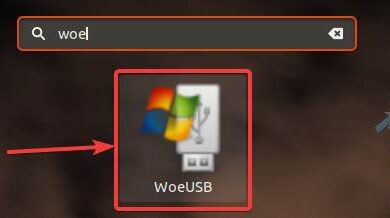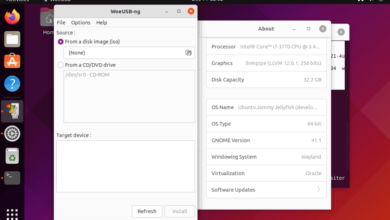The Ultimate Guide to Understanding PI123 Everything You Need to Know

In today’s rapidly evolving technological landscape, specific terms, acronyms, and identifiers often emerge as critical components of new developments. One such identifier, “PI123,” has been gaining traction in various discussions across multiple industries. But what exactly is PI1232? How does it impact industries or sectors, and why should it matter to you? This article will serve as your ultimate guide to understanding PI123, breaking it down into digestible segments for anyone seeking clarity on the topic.
What is PI123?
At its core, PI123 refers to a unique identifier, technology, or concept that serves a specific function across sectors. Depending on its context, PI123 could represent a product name, project code, process identifier, or even a formulaic algorithm that solves complex problems. While the actual nature of PI123 may vary based on application, its growing importance highlights the need for deeper understanding.
The name “PI1232” suggests a structured concept, likely a blend of “PI” (which might stand for “Project Identifier,” “Performance Index,” or another technical term) and a sequential number, “123.” This naming convention points to its potential use in cataloging, tracking, or ranking data, projects, or systems.
Applications of PI123 Across Industries
PI1232’s versatility means it can serve different purposes based on the industry or field in which it is applied. Below, we examine some potential uses across key domains:
1. Technology and Software Development
In software development, PI1232 could signify a specific protocol or algorithm designed to optimize processes or manage tasks. For example:
- Project Management: PI123 might act as a framework for prioritizing tasks within an Agile development model.
- Data Encryption: As cybersecurity remains critical, PI1232 might represent an advanced encryption standard for safeguarding data.
- System Monitoring: Software engineers could deploy PI123 for real-time diagnostics and performance monitoring.
2. Manufacturing and Logistics
In manufacturing, PI1232 may be employed as an identifier for products or processes. For example:
- Supply Chain Tracking: PI1232 could label a specific batch of goods for easy tracking across the supply chain.
- Product Quality Assurance: Manufacturers might use PI123 to represent quality control measures or standard testing protocols.
3. Healthcare and Pharmaceuticals
In the medical industry, PI1232 might relate to innovative approaches in diagnostics or treatment:
- Drug Development: PI1232 could signify a research trial or a proprietary formula under development.
- Patient Monitoring: Hospitals might use PI123 as a patient identifier for tracking medical histories or treatment plans securely.
4. Education and Research
Educational institutions and researchers might use PI1232 to organize data or conduct studies:
- Research Analytics: PI1232 could help categorize large datasets for academic papers or institutional reports.
- Student Progress Tracking: Schools might employ PI1232 to create unique profiles for tracking student achievements and goals.
Why is PI123 Important?
Understanding PI1232’s significance requires diving deeper into its potential benefits. Whether you’re a business owner, tech enthusiast, or industry expert, PI123 likely offers advantages in these areas:
1. Enhanced Efficiency
PI123 simplifies complex processes, making systems more streamlined. For instance, in logistics, labeling batches with PI1232 ensures products are easily tracked, reducing errors.
2. Data Security
PI1232 may involve encryption or secure identifiers, ensuring critical data is protected. This is vital in fields like finance, healthcare, and technology, where sensitive information is routinely handled.
3. Scalability
As businesses or systems grow, PI1232 can adapt to accommodate increased complexity, ensuring sustained performance without overhauls.
4. Innovation Potential
Whether it’s an algorithm, framework, or process, PI123 fosters innovation by solving problems or optimizing workflows. This can translate to cost savings and competitive advantages.
How Does PI1232 Work?
While the specifics of PI1232’s operation depend on its context, let’s explore a generalized approach to how it might function:
Step 1: Identification
PI1232 serves as a unique identifier within a system. For instance, in logistics, PI123 might tag shipments with relevant information (e.g., origin, destination, contents).
Step 2: Integration
Once deployed, PI1232 integrates with existing systems, such as databases, dashboards, or sensors.
Step 3: Real-Time Updates
One of PI1232’s critical features is real-time data updates. Whether tracking product movement or monitoring system performance, PI123 ensures timely insights.
Step 4: Reporting and Optimization
PI1232 also generates reports or analytics to highlight inefficiencies or areas for improvement.
Real-World Example of PI123
To illustrate, imagine a scenario in a warehouse:
- Use Case: Managing Inventory
- Problem: Misplaced inventory items lead to delays and increased costs.
- Solution: The warehouse implements PI1232 as a labeling system. Each product batch is tagged with a unique PI123 identifier linked to a database.
- Outcome: Workers can quickly locate items, reducing time spent searching, and the system generates alerts for low stock, enhancing efficiency.
How to Leverage PI1232 in Your Field
If you’re considering adopting PI1232 in your industry, here are actionable steps:
Step 1: Assess Needs
Determine the specific challenges PI123 can address. For instance, if your business struggles with tracking, PI123 could streamline logistics.
Step 2: Plan Integration
Map out how PI1232 will fit into your current workflows. Consider any adjustments or training required for team members.
Step 3: Implement Gradually
Introduce PI123 in phases, starting with pilot programs to test its effectiveness.
Step 4: Monitor Performance
Regularly evaluate how PI1232 performs and make necessary refinements.
Step 5: Scale Usage
Once PI123 proves effective, scale its application across other areas of your operations.
Challenges and Considerations
While PI123 offers numerous benefits, some challenges may arise:
- Initial Costs: Setting up PI1232 systems may involve upfront expenses.
- Learning Curve: Employees or teams might require training to understand and use PI123 effectively.
- Compatibility Issues: PI1232 might not integrate seamlessly with all legacy systems, requiring additional adjustments.
The Future of PI123
As industries continue to evolve, PI123’s applications will likely expand. Emerging technologies like artificial intelligence, blockchain, and the Internet of Things (IoT) may incorporate PI1232 as a foundational component. For example:
- AI Integration: PI1232 could serve as a dataset identifier for machine learning models.
- Blockchain Verification: In supply chain management, PI123 could work as a secure ledger entry for transparent transactions.
- IoT Connectivity: Smart devices could use PI1232 as a communication protocol for seamless interaction.
Conclusion
PI123 represents a versatile concept or technology poised to transform processes across industries. Its adaptability, efficiency, and innovation potential make it a valuable tool in an increasingly data-driven world. Whether you’re in manufacturing, healthcare, technology, or education, understanding and leveraging PI123 could be the key to staying ahead of the curve.
By exploring how PI1232 aligns with your unique challenges and needs, you can unlock its full potential and set your organization up for sustained success. Remember, the future is built on systems that simplify, secure, and scale—and PI123 might just be one of them.




